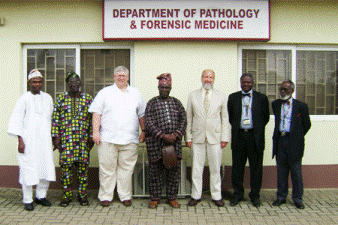Natural Resources, School of
Date of this Version
6-2010
Document Type
Article
Citation
Published in Journal of Archaeological Science 37:6 (June 2010), pp. 1326-1338; doi:10.1016/j.jas.2009.12.037
Abstract
To date, limited numbers of dental calculus samples have been analyzed by researchers in diverse parts of the world. The combined analyses of these have provided some general guidelines for the analysis of calculus that is non-destructive to archaeological teeth. There is still a need for a quantitative study of large numbers of calculus samples to establish protocols, assess the level of contamination, evaluate the quantity of microfossils in dental calculus, and to compare analysis results with the literature concerning the biology of calculus formation. We analyzed dental calculus from 53 teeth from four Brazilian sambaquis. Sambaquis are the shellmounds that were established prehistorically along the Brazilian coast. The analysis of sambaqui dental calculi shows that there are relatively high concentrations of microfossils (phytoliths and starch), mineral fragments, and charcoal in dental calculus. Mineral fragments and charcoal are possibly contaminants. The largest dental calculi have the lowest concentrations of microfossils. Biologically, this is explained by individual variation in calculus formation between people. Importantly, starch is ubiquitous in dental calculus. The starch and phytoliths show that certainly Dioscorea (yam) and Araucaria angustifolia (Paraná pine) were eaten by sambaqui people. Araceae (arum family), Ipomoea batatas (sweet potato) and Zea mays (maize) were probably in their diet.
Included in
Archaeological Anthropology Commons, Ecology and Evolutionary Biology Commons, Environmental Public Health Commons, Other Public Health Commons, Parasitology Commons


Comments
Copyright © 2009 Elsevier Ltd. Used by permission.